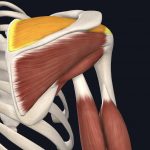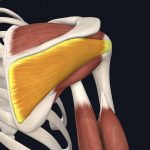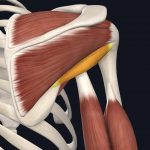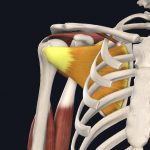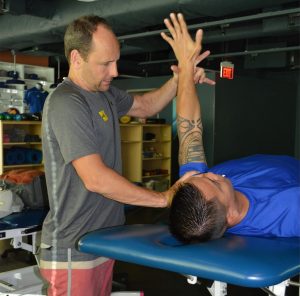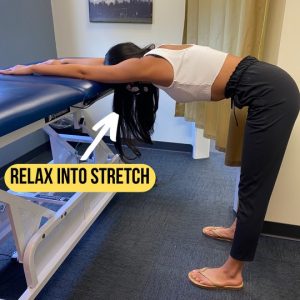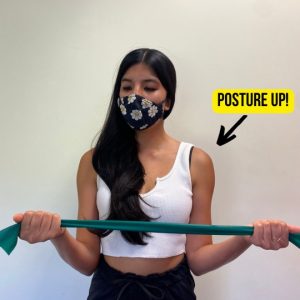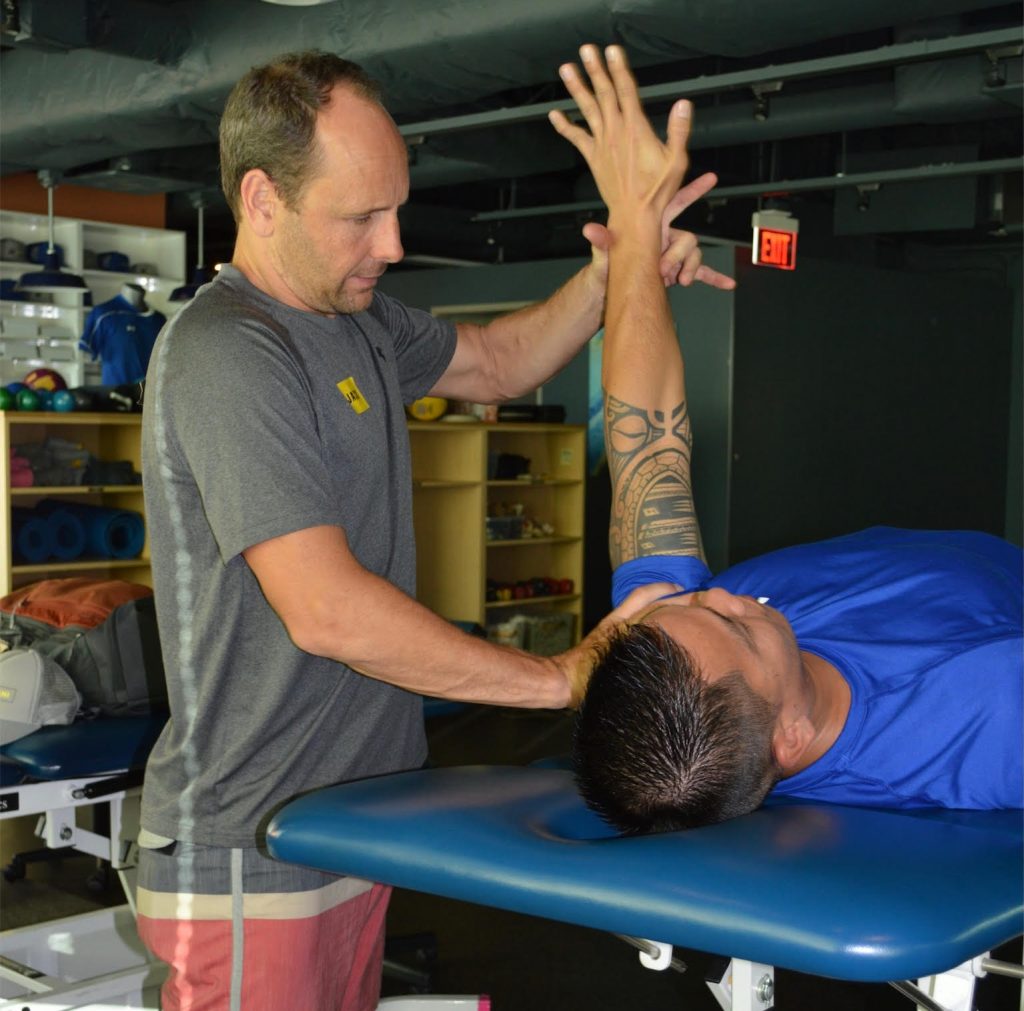
If you’ve recently injured your rotator cuff, you’ve probably discussed options with your doctor or a physical therapist. The same question always arises: Can a rotator cuff tear heal on its own?
The answer always depends on the size of the tear, your current ability to use the shoulder, and your health status. Here are the details.
First, Let’s Understand Rotator Cuff Anatomy
The rotator cuff is a group of four muscles located on your shoulder blade which attach to the upper part of your arm. They are responsible for holding your humerus in place, elevating your arm overhead, and rotating the shoulder outwards. The rotator cuff basically stabilizes your shoulder.
These muscles can be remembered by the acronym “SITS”
- Supraspinatus
- Infraspinatus
- Teres minor
- Subscapularis
If any of these muscles are strained, torn, or have inflamed tendons, you could experience pain, weakness, and an inability to lift your arm.
- Supraspinatus
- Infraspinatus
- Teres Minor
- Subscapularis
Images courtesy of Complete Anatomy
Next, Understand Shoulder Girdle Mechanics and The Rotator Cuff’s Role
The shoulder girdle complex is made up of the clavicle (collar bone), humerus (upper arm bone), and scapula (shoulder blade).
These bones form several joints in the shoulder girdle:
- Glenohumeral joint: This is where the shoulder blade and humerus meet, known as the shoulder.
- Acromioclavicular joint: This is where the shoulder blade and collarbone meet.
- Sternoclavicular joint: This is where the sternum and collarbone meet).
- Scapulothoracic joint: This is where a floating joint where the shoulder blade moves along the rib cage.
Together, these joints move to produce the shoulder movements known as flexion (raising your arm out in front of you), extension (reaching behind you), abduction (raising your arm out to the side), adduction (bringing the arm to your side), internal rotation (reaching behind your back), external rotation (reaching over your head and behind your back), and horizontal adduction (reaching across your body), and horizontal abduction (reaching out to the side).
Without proper engagement of the rotator cuff muscles to assist in providing smooth and controlled motion of the shoulder joint, compensations can occur at the other joints within the shoulder girdle complex resulting in further injury to the passive tissues that stabilize the shoulder girdle complex (ligaments, the glenoid labrum, or bony attachments), and/or active tissues (muscles) such as the biceps.
How Do Rotator Cuff Injuries Happen?
The most common ways to injure your rotator cuff include:
- Performing overhead tasks, like painting your house.
- Causing repetitive stress to your shoulder, like a throwing or hitting sport.
- Participating in contact sports with direct trauma, like football or soccer.
- Experiencing wear-and-tear over time, like accumulated damage into older age.
Symptoms Depend on the Type of Rotator Cuff Tear
Symptoms can vary depending upon severity and can include a strain (pulled muscle), partial tear, or full-thickness tear.
The most common symptom is pain, which can sometimes refer down the side of your arm or even into your hand which can be confused with nerve issues. This type of pain can develop from trigger points, inflamed muscles, or a tear.
A rotator cuff strain or partial tear may heal over time with proper care. Treatment usually consists of physical therapy. Recovery time often depends on depth and location of tear.
A full-thickness rotator cuff tears will usually warrant a follow-up with an orthopedic specialist. The exact location and thickness of the tear will be confirmed by an MRI, followed by surgical intervention.
So, Can a Rotator Cuff Tear Heal On Its Own?
Yes! Small rotator cuff tears can heal on their own, especially with the right guidance. This type of injury is frequently seen in a physical therapy clinic. At JACO Rehab, physical therapists can help guide you to success!
Physical therapists also treat post-operative rotator cuff tears, so if you need surgery for your injury, we can help you through that process too.
About Physical Therapy Sessions for the Shoulder
The first session will always consist of a thorough evaluation to assess your range of motion, strength, and individual limitations. This session’s main goal is to better understand the underlying cause of your shoulder pain and weakness. Then, we figure out an individualized treatment plan.
- Our physical therapists are hands-on with patients for more than 50 minutes.
Typical course of care for a rotator cuff injury will vary depending upon severity, location, and your own medical history and underlying conditions that can influence healing (like smoking, diabetes). Expect to see a physical therapist for at least four to six weeks, twice per week.
Physical therapists check all the surrounding joints to make sure the whole complex is moving appropriately. We look at your active mobility, passive mobility, joint play, strength, and how you move when you’re lifting/reaching/pulling/pushing. Treatment depends on how these factors look and feel.
Treatment sessions usually include hands-on manual therapy which allows the therapist to address any tissue or joint mobility restrictions that may be present. Sessions also include stretches and exercises that are important for your recovery, and they often reinforce the manual techniques that therapists perform. Your compliance to the prescribed exercises is your key to success – so come ready to work!
By taking measurements at the beginning and end of each session, your physical therapist can ensure that the interventions prescribed are working for you. They are always individualized to meet your specific goals such as getting back to work, surfing, or golfing!
Two Easy Exercises for Rotator Cuff Tears
Here are two examples of gentle exercises that a physical therapist may prescribe to treat your rotator cuff early in care. Use these as preliminary exercises before you get to a therapist. Do not perform them if they are painful.
- Passive Table Flexion Stretch: This exercise emphasizes the range of motion needed to get back to activities overhead. All you need is a table or counter. It can be done standing or seated. The goal is to keep your shoulder down and back with your neck relaxed while bowing down to stretch your arms overhead. Avoid any pain or pinching in the shoulder – if you feel it, you may be going too far into the stretch.
- Shoulder External Rotation Activation: This exercise works the rotator cuff, specifically the external rotators (Infraspinatus and Teres Minor). It can be performed on your back, sitting, standing, or on your side. Be sure to keep your chest up, squeeze your shoulder blades together, and keep your elbows to your side to isolate the right spot. This exercise is highly modifiable. External rotation can be done with a dowel as a stretch into the position, pushing into a towel as an isometric activation exercise, or with a resistance band/weight for strengthening.
Reach out!
We wish you the best of luck with your recovery. To schedule an appointment with use please call (808) 381-8947 or email us!
Written by Jenn Lewis, DPT
